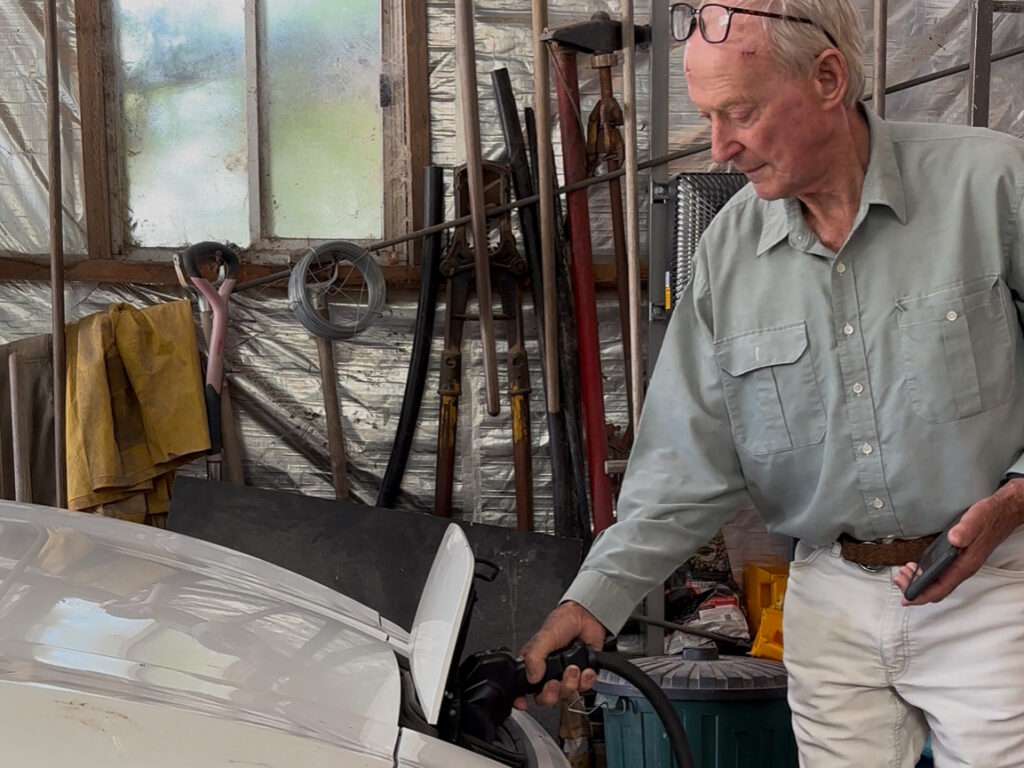Driving change: a rural pioneer’s role in Australia’s clean energy shift
Discover how electric vehicles are powering homes and the grid in rural Australia through Francis Clarke’s groundbreaking V2G trial.

In the rolling countryside near Goulburn, New South Wales, Francis Clarke is quietly shaping the future of one of Australia’s most exciting new technologies.
On a 500-hectare property in the quiet hills of Lower Boro, Clarke has been doing something new over the last two years. He is one of Australia’s first residential participants in a vehicle-to-grid (V2G) trial.
With rooftop solar, two inverters, a home battery, and now a V2G-enabled EV, his home became a self-sustaining energy ecosystem.
The trial is a living example of how electric vehicles, with V2G technology, will be a vital component in the clean energy transition.
Clarke’s work is a vital proof point for Australia’s clean energy transition. It demonstrates how bidirectional charging can empower consumers, support the grid and accelerate the transition to a decarbonised transport system.
Thanks to the trailblazing effort by Clarke, the Australian Renewable Energy Agency (ARENA) is taking the learnings and funding a project as part of a larger market roll out with Amber Electric. The plan is to install 100 smart chargers and 50 V2G chargers in homes across the nation.
Francis’ story
Clarke didn’t set out to be a pioneer. He just wanted a reliable, clean way to get around. But when he bought his electric vehicle and heard about V2G technology, something clicked.
A retired farmer at 84, Clarke found himself ‘getting interested in the energy system and how bi-directional charging of my car can be useful in supporting the grid.’
Technology from V2G offered a simple but powerful idea: your car could do more than drive. It could store energy, share it, and support the grid when it’s under pressure.
So, he signed up for a local V2G trial.
The setup was straightforward: a bi-directional charger in his garage, a smart app on his phone, and a few tweaks to his daily routine. But the impact was anything but ordinary.
Clarke’s car now charges when renewable energy is plentiful and feeds power back into the grid during peak demand. It’s smart, efficient, and surprisingly satisfying.
‘Over the last 12 months I’ve basically run my house and my car – and that’s 2,500 kilometres a month – for nothing,’ Clarke said.
In May last year, Clarke was able to earn $570 in two hours of selling power to the grid. The opportunity came when two Eraring power stations were in unplanned maintenance. Numerous outages have occurred since then and have allowed Clarke to profit.
Over the past year he has powered his house and travelled 26,000 km in his EV and still has credit on his electricity account of $315. Clarke estimates his total savings over the year for petrol and power is $6,000.
‘I buy and sell power at the same price as the big retailers do, and everything is passed through clearly without markup,’ Clarke said.
While the financial benefits are real – lower power bills, occasional credits from the grid – for Clarke, it’s about more than money. It’s about being part of a shift. A quiet, steady revolution in how we think about energy.
‘It reduced my reliance on the grid. I am pretty independent. I’ve actually sold more power to the grid over the last 12 months than I bought.’ Clarke said.
Driving the nation forward
Clarke’s trial is a latest in a series of Australian-first projects and studies supported by ARENA since 2019 with that goal in mind.
His efforts show EVs should be viewed as critical energy infrastructure, not just cars.
With the success of Clarke’s trial, ARENA will take these learnings and continue to focus on decarbonising the transport industry through the acceleration of innovation in this space. The job isn’t done yet.
To learn more about ARENA’s work to accelerate V2G adoption in Australia, view the Bidirectional Charging Roadmap. The roadmap lays out the plan to roll out V2G across the country and the steps to achieve this goal.
The road may be long, but we’re getting there through groundbreaking trials and insights from early adopters like Clarke.

ARENA